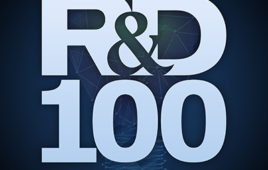The time-consuming scientific research behind drug discovery can now be accelerated with the launch of AMBER 11, a software tool that enables bio-scientists to harness the power of supercomputing on their desktop PC.
AMBER 11, the latest version of one of the most widely used applications for biochemists and others involved in molecular dynamics research, is optimized to run on NVIDIA graphics processing units (GPUs), which speed up the tool by up to 100-fold over a traditional CPU -based server. GPUs deliver performance from a desktop workstation that previously could only be achieved on a supercomputer, improving productivity as scientists no longer need to wait for time on a shared supercomputer or departmental cluster of servers.
“The supercomputing resource we use is constantly over-subscribed, forcing us to wait a day or more to run a simulation, adding weeks to our research projects,” said Dr. Ross Walker, research professor at the San Diego Supercomputer Center, at the University of California, San Diego, and a principle AMBER contributor.
AMBER 11 is designed to take advantage of NVIDIA Tesla 20-series GPUs, which utilize the massively parallel CUDA architecture for the specific needs of high performance computing applications. In early trials with the AMBER user community, Dr. Walker received over a dozen reports of speedups over 30-times on a range of bio-molecular simulations.
“With GPUs, we can now do most of our work at the desktop and that changes everything. Any research department looking to invest in computing resources to run AMBER should start by equipping every researcher with GPU-enabled workstations,” Walker added.
Dr. Walker noted that just one Tesla GPU provides as much processing power as a high performance cluster of 512 CPU cores when simulating one nanosecond in the lifetime of a 25,000 atom implicit solvent nucleosome. In a simpler explicit solvent simulation, such as the JAC benchmark, he noted that one Tesla GPU provides the equivalent processing power of 48 cores of the NSF Ranger supercomputer.
“Order of magnitude increases in performance enable new science and the work we’ve done with Dr. Walker is one of these breakthroughs,” said Andrew Cresci, general manager of vertical marketing at NVIDIA. “With AMBER 11, scientists can now test many more theories and simulate many different scenarios due to the speed afforded by GPUs and most importantly, the ease of access to GPU-based workstations.”




